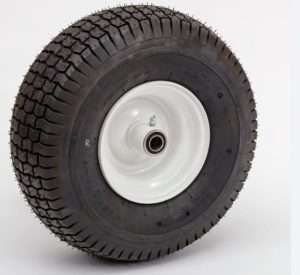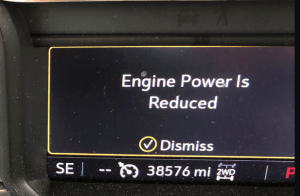Expert Tips for Replacing the Steering Wheel on Your Dodge Challenger
Tools and Parts Needed for Steering Wheel Replacement
Required Tools for Steering Wheel Replacement
Before beginning the process of replacing your Dodge Challenger’s steering wheel, it’s important to gather all the necessary tools. The tools you will need include a socket set, a Torx bit set, pliers, and a screwdriver.
You may also need a pry bar if your steering wheel cover is difficult to remove. Having all of these tools readily available will make the process smoother and more efficient.
Parts Needed for Steering Wheel Replacement
In addition to the tools, you’ll also need some parts to complete the steering wheel replacement. The most important part is the replacement steering wheel itself, which you can purchase from a dealership or an aftermarket supplier.
Additionally, you may need a new steering wheel cover and some bolts if the old ones are damaged. Make sure to double-check that the replacement steering wheel is compatible with your Dodge Challenger model and year.
Where to Buy the Replacement Steering Wheel for Your Dodge Challenger
The best place to buy a replacement steering wheel for your Dodge Challenger is either a dealership or a reputable aftermarket supplier. The dealership will have the exact part you need, but it may be more expensive.
Aftermarket suppliers offer a wider variety of steering wheels at different price points, but make sure to choose a reputable supplier that sells high-quality parts. You can also check online retailers such as Amazon or eBay for a replacement steering wheel, but make sure to read customer reviews before making a purchase to ensure you’re getting a quality product.
Preparation for Steering Wheel Replacement
Safety Precautions Before Replacing the Steering Wheel
Before beginning any work on your vehicle, it’s important to take necessary safety precautions. When replacing the steering wheel, it’s important to keep in mind that the airbag is a critical safety feature and should be handled with care.
Make sure to consult your owner’s manual and any relevant safety guidelines before starting the process. Additionally, wear protective gloves and eye protection to prevent injury.
Disconnecting the Battery Before the Steering Wheel Replacement
Before removing the airbag, it’s important to disconnect the battery to prevent any accidental deployment. This can typically be done by removing the negative battery cable. Make sure to allow a few minutes for any electrical components to discharge before proceeding.
Removing the Airbag Before the Steering Wheel Replacement
Removing the airbag is a crucial step in the steering wheel replacement process. Locate the airbag connector and follow the instructions in your owner’s manual for removal. It’s important to handle the airbag carefully to avoid damaging it, and to store it in a safe place where it won’t be damaged or accidentally deployed.
Removing the Old Steering Wheel
Removing the Steering Wheel Cover
The first step in removing the old steering wheel is to remove the steering wheel cover. This can typically be done by prying it off with a screwdriver or pry bar. If your steering wheel has buttons or controls, be careful not to damage them as you remove the cover.
Removing the Steering Wheel Bolts
Once the cover is removed, locate the bolts that secure the steering wheel to the column. These bolts can typically be removed using a socket set and Torx bit set. Make sure to keep track of which bolts go where, as they may be different lengths or thread sizes.
Removing the Old Steering Wheel and Connections
Once the bolts are removed, gently pull the old steering wheel away from the column. Disconnect any electrical connections and remove the old steering wheel from the vehicle. Make sure to carefully store the old steering wheel and any parts in a safe place where they won’t be damaged.
“Installing the New Steering Wheel”
The process of installing a new steering wheel in a Dodge Challenger is a crucial step in ensuring the safety and performance of the vehicle. In this section, we’ll guide you through the steps of installing the new steering wheel.
“Connecting the New Steering Wheel to the Column”
Connecting the new steering wheel to the column involves connecting the steering wheel to the steering column. This is a crucial step in the installation process and must be done carefully to ensure the safety of the vehicle and its passengers.
“Installing the Steering Wheel Cover”
The steering wheel cover protects the steering wheel from damage and enhances the appearance of the interior. Installing the cover is a simple process that requires the proper tools and attention to detail.
“Final Steps for Steering Wheel Installation”
The final steps of installing the new steering wheel include tightening the bolts and checking for proper alignment and function. This step is important in ensuring the safety and performance of the vehicle, and must not be skipped.
“Testing the New Steering Wheel”
After the new steering wheel has been installed, it’s important to test it to ensure that it’s functioning properly. In this section, we’ll guide you through the process of testing the new steering wheel.
“Checking the Steering Wheel for Proper Function”
Checking the steering wheel for proper function involves checking for proper alignment, stability, and responsiveness. This step is important in ensuring the safety and performance of the vehicle.
“Checking for Airbag Functionality”
The airbag is a critical component of the steering wheel, and it’s important to ensure that it’s functioning properly after the steering wheel replacement. This involves checking the airbag light and testing the airbag deployment system.
“Testing the Steering Wheel Controls”
Testing the steering wheel controls involves checking the audio, navigation, and other controls for proper function. This step is important in ensuring that all of the controls on the steering wheel are working correctly.
“Troubleshooting Common Issues with Steering Wheel Replacement”
Despite following the proper steps, some issues may arise during the process of replacing the steering wheel. In this section, we’ll guide you through the process of troubleshooting common issues.
“Steering Wheel Not Centered”
If the steering wheel is not centered after replacement, it’s important to adjust it to ensure proper alignment and function. This step is important in ensuring the safety and performance of the vehicle.
“Airbag Light On After Steering Wheel Replacement”
If the airbag light is on after the steering wheel replacement, it’s important to diagnose and resolve the issue. This may involve resetting the airbag system or replacing a faulty component.
“Steering Wheel Controls Not Working Properly”
If the steering wheel controls are not working properly, it’s important to diagnose and resolve the issue. This may involve replacing a faulty component or adjusting the controls.
“Frequently Asked Questions About Steering Wheel Replacement”
In this section, we’ll answer some of the most frequently asked questions about steering wheel replacement.
“Can I Replace the Steering Wheel Myself?”
Yes, replacing the steering wheel on a Dodge Challenger is a relatively simple process that can be done by most car enthusiasts with the proper tools and knowledge.
“Do I Need to Reset the Airbag After Steering Wheel Replacement?”
Yes, it’s important to reset the air



